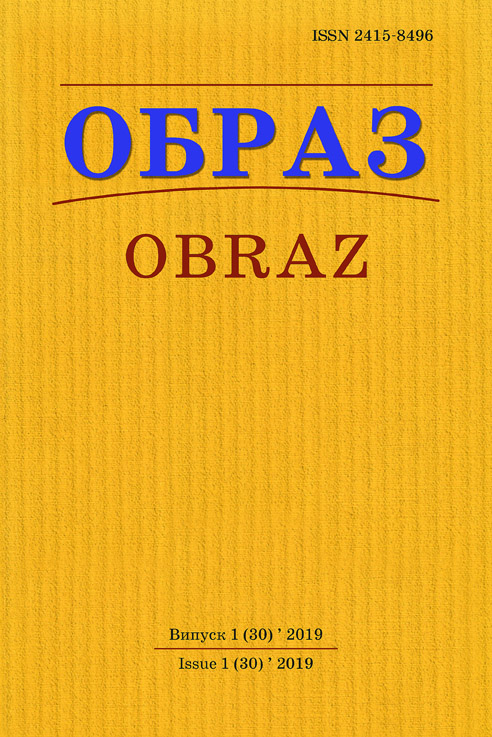Abstract
Introduction. The study of linguistic consciousness and the meaning of words through associative experiments is an effective and priority in linguistics, since it reveals the tendency of change, ethnocultural specificity and actual concepts in the language picture of the world of native speakers. These associative experiments allow us to study how the media affects people’s minds, changing their picture of the world. The purpose of the article: to carry out a psycholinguistic analysis of the associative field of the word-stimulus INTERNET to identify the semantic spheres and actual concepts that are part of the associative field and reflect the fragment of the language picture of the world of Ukrainians. Research methods: The free associative experiment was conducted during 2011-2012. In the experiment 732 people, aged from 17 to 47 years old from different regions of Ukraine are involved. The survey questionnaire contained 105 words-stimuli of advertising vocabulary among which was the stimulus INTERNET. Respondents had to write on the questionnaire the first word, which fell into their minds after the sound of the word-stimulus. In our study, the reactions that have a common semantic connection in the associative field are combined into semantic spheres. The semantic spheres of the associative field reflect the specifics of the use of these words and the one in which the word is surrounded by the language, its semantic valency. In the associative field of the word-stimulus INTERNET there were reactions that we attributed to the activity and emotional semantic sphere. Internet as a reaction occurs in 31 associative fields of vocabulary of words-stimuli (among 105 presented). For example, the Internet reaction appears on the word-stimulus SITE 146 times, and on the stimulus INFORMATION - 133 times. All reactions of the semantic spheres that are part of the associative field make it possible to reconstruct complex of mental formations that become visible through words as the main linguistic signs that help to obtain information from the depths of consciousness. The prospect of the study is seen in a subsequent psycholinguistic analysis of the associative fields of advertising vocabulary. Repeated holding of a free associative experiment with a word-stimulus INTERNET will show new topical concepts associated with this stimulus.
References
1. Akimova N. Fragmentation of the news Internet communication as a factor. which complicates its understanding / N. Akimovа / / Psycholinguistics. – 2016. – Vol. 20 (2). –12-20.
2. Large explanatory dictionary of the modern Ukrainian language − Mode of access : http:// www.lingvo.ua/uk
3. Markovina I. Y. (2000) Specificity of the language consciousness of Russians and Americans: the experience of constructing an «associative gestalt» of the texts of the original and translation / I. Y. Markovinа, E. V. Danilova // Language consciousness and the image of the world. Collection of articles / [op. edit NV Ufimtseva]. – Moscow: Institute of Linguistics, Russian Academy of Sciences, 2000. – P. 116–132.
4. Terekhova D.I. Analysis of associative fields of words-stimuli MIR / MIR / MIR in the East Slavic languages / D. I. Terekhova // East European Journal of Psycholinguistics. Issue 1, 2014, – P. 194–201.
5. Terekhova D.I. Using psycholinguistic methods of research for interlingual and intercultural comparisons / D.I. Terekhova // Scientific bulletin of the department of the UNESCO of the Kyiv National Linguistic University. Philology, pedagogy, psychology. – 2013. – Issue 27. – pp. 25–31.
6. Gajlewicz Katarzyna (2009). Inwazja kultury obrazkowej w prasie polskiej // Biznes. Kultura / pod red. Jana Krefta, J. Majewskiego – Gdansk. – S. 269–274.
7. Manjoo Farhad . How the Internet Is Loosening Our Grip on the Truth. URL https://www. nytimes.com/2016/11/03/technology/how-the-internet-is-loosening-our-grip-on-the-truth. html?_r=0 (access February 12, 2019).
8. Sartori Giovanni (2005) Homo videns.Telewizja i post-myślenie. –Warszawa: Wydawnictwo Uniwersytetu Warszawskiego. - Warszawa. 103 S.

This work is licensed under a Creative Commons Attribution 4.0 International License.

